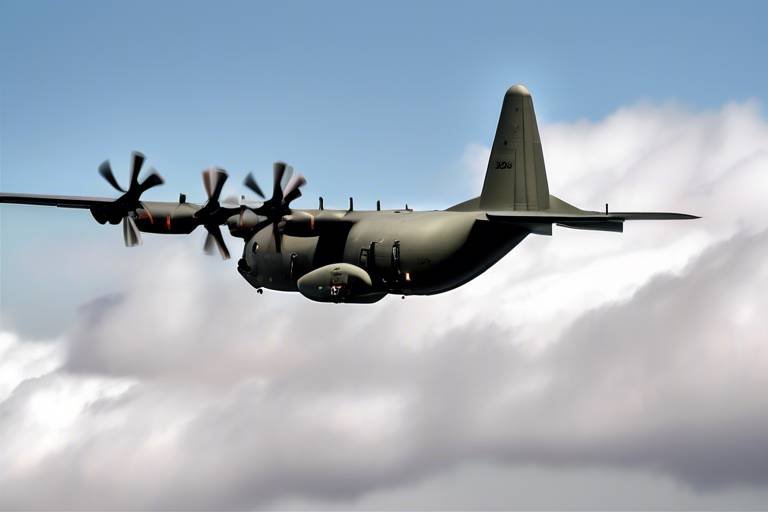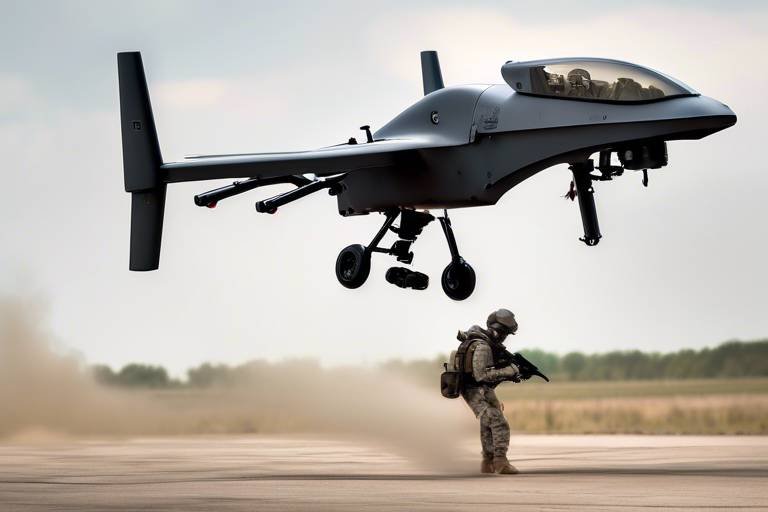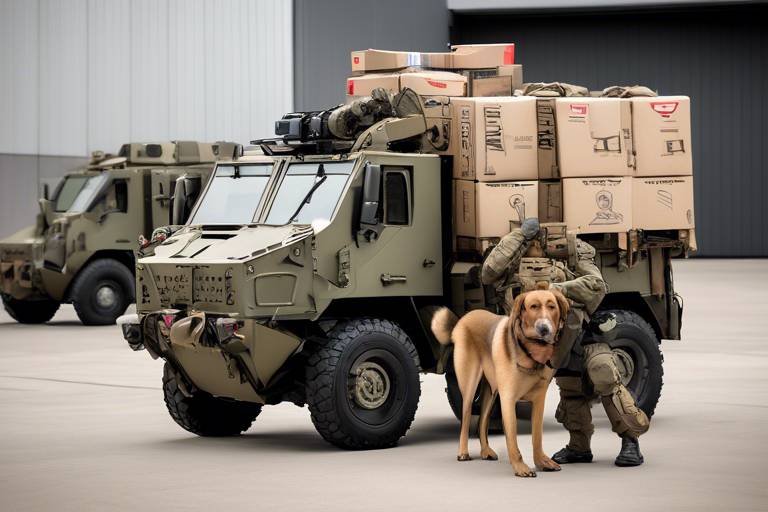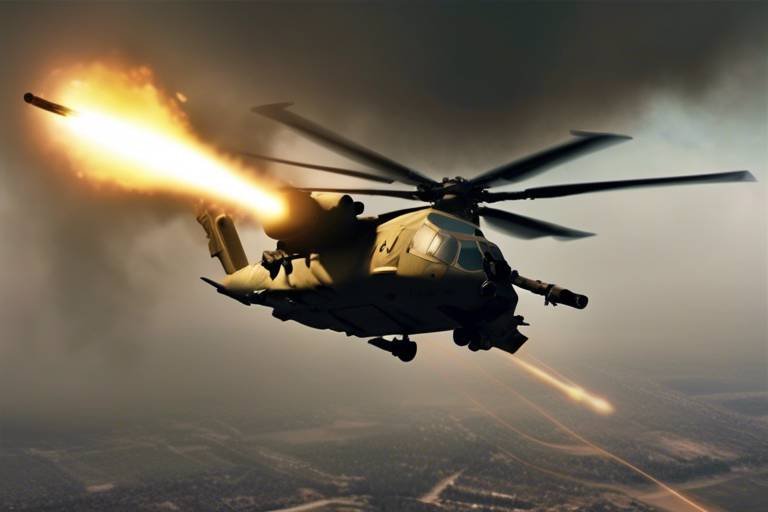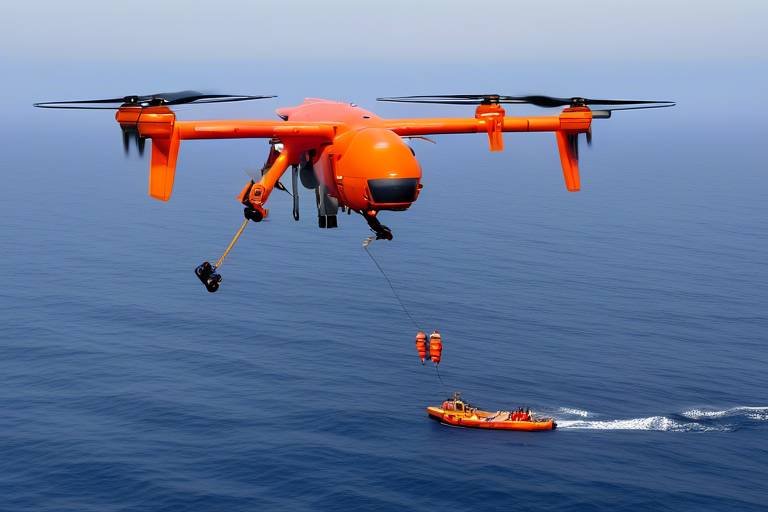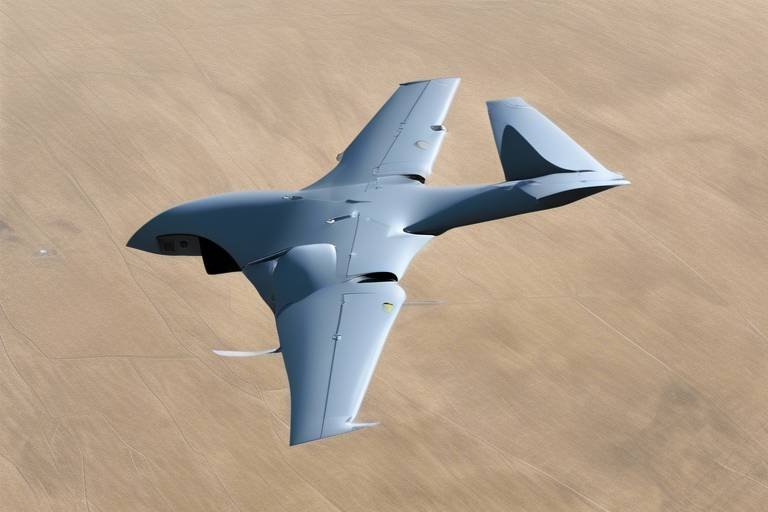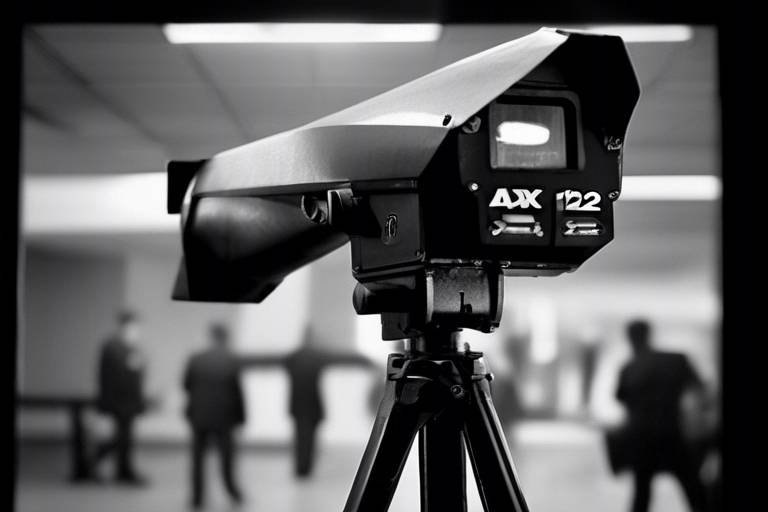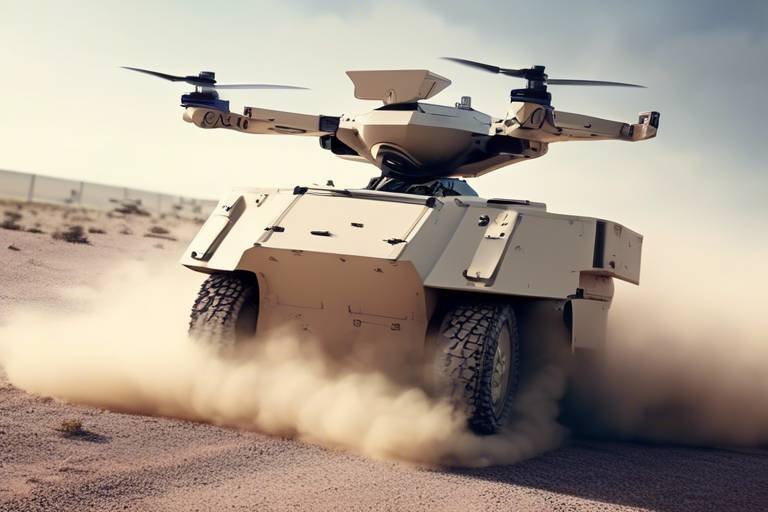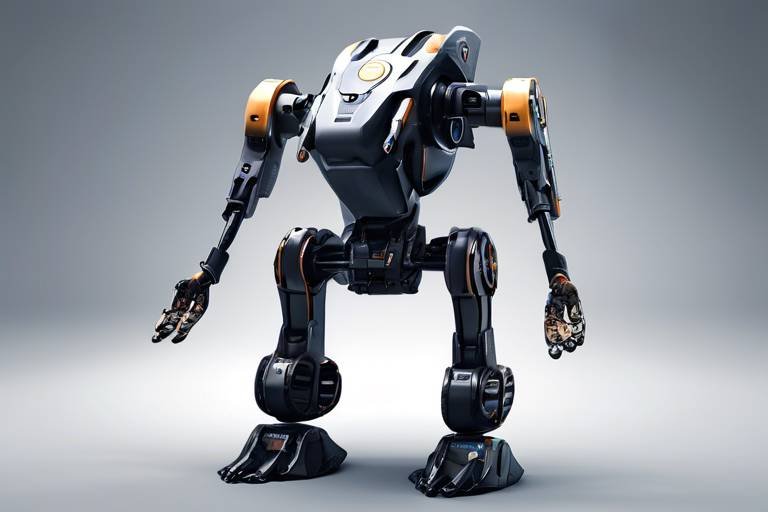Assessing the Performance of the C-130 Hercules in Military Operations
The C-130 Hercules, a stalwart in military aviation, has been a game-changer since its inception. Imagine a workhorse that’s been flying the skies for over six decades, adapting to the ever-changing demands of warfare and humanitarian efforts alike. This aircraft is not just a mode of transport; it embodies the essence of versatility and reliability. With its ability to perform a multitude of roles, the C-130 has become synonymous with military air mobility. But what makes this aircraft so special? Let’s dive into its historical significance, technical specifications, and operational roles to uncover the secrets behind its enduring legacy.
The C-130 Hercules made its debut in the 1950s, emerging from the need for a tactical airlifter that could operate in diverse environments. Its initial deployment during the Vietnam War showcased its capabilities, transporting troops and supplies into combat zones where larger aircraft simply couldn’t land. Over the decades, the Hercules has evolved, participating in various conflicts, from the Gulf War to contemporary operations in Afghanistan and Iraq. Each mission has added to its rich history, cementing its role as a vital asset in military operations around the globe.
When you look at the C-130 Hercules, you’ll notice its rugged design and robust features that scream versatility. With a wingspan of approximately 132 feet and a maximum payload capacity of around 44,000 pounds, this aircraft is built to handle heavy loads while still being able to land on short and unpaved runways. Its four turboprop engines not only provide the necessary thrust but also allow for better fuel efficiency compared to jet engines. The C-130 can reach speeds of up to 366 knots and has a range of approximately 2,400 nautical miles, making it a reliable choice for long missions. These specifications are what set the Hercules apart from its competitors, allowing it to adapt to various operational needs.
The versatility of the C-130 Hercules is evident in its wide range of operational roles. Whether it’s transporting troops, conducting medical evacuations, or refueling other aircraft in mid-air, the Hercules has proven itself time and again. For instance, during humanitarian crises, it has been used to deliver food and medical supplies to remote areas, showcasing its dual capability in both military and civilian contexts. The aircraft can be configured for special operations, with features that allow for stealthy insertions of troops into hostile territories. This adaptability is what makes the C-130 a linchpin in military aviation.
Air mobility is crucial in modern warfare, and the C-130 Hercules has played a pivotal role in enhancing logistical support and troop deployment. Its ability to operate in austere environments means that military forces can be deployed quickly and efficiently, often without the need for extensive ground infrastructure. This capability has transformed the way military operations are conducted, allowing for rapid response during conflicts or natural disasters. The Hercules has also been instrumental in maintaining supply lines, ensuring that troops on the front lines receive the necessary resources to carry out their missions.
When comparing the C-130 Hercules to other military transport aircraft, several factors come into play. While larger aircraft like the C-17 Globemaster III can carry more cargo, they lack the Hercules’ ability to operate from shorter runways. On the flip side, smaller aircraft may excel in specific missions but often can’t match the Hercules’ payload capacity. The unique combination of size, versatility, and operational flexibility makes the C-130 stand out as a preferred choice in many scenarios.
Despite its many strengths, the C-130 Hercules is not without challenges. As warfare evolves, so do the demands placed on military aircraft. Technological advancements in enemy capabilities, such as improved anti-aircraft systems, pose significant risks to the C-130 during certain missions. Additionally, the aircraft's age means that maintenance and upgrades are increasingly necessary to keep it competitive in modern warfare. Balancing these challenges while maintaining its legendary status is crucial for the C-130’s continued relevance.
The future of the C-130 Hercules looks promising, with ongoing developments aimed at enhancing its capabilities. Upgrades in avionics, engines, and defensive systems are on the horizon, ensuring that this aircraft remains a formidable player in military operations. As the needs of modern warfare evolve, so too will the Hercules, adapting to meet the challenges of the 21st century. The commitment to innovation will ensure that the C-130 continues to serve as a backbone of air mobility for years to come.
In conclusion, the C-130 Hercules stands as a testament to the evolution of military aviation. Its historical significance, robust design, and adaptability in various operational roles make it an invaluable asset in both combat and humanitarian missions. As we look to the future, the continued upgrades and developments will ensure that this aircraft remains relevant in an ever-changing landscape. The legacy of the C-130 is not just about its past, but about its potential to shape the future of military operations.
- What is the maximum payload capacity of the C-130 Hercules?
The C-130 Hercules has a maximum payload capacity of approximately 44,000 pounds. - How fast can the C-130 Hercules fly?
The C-130 can reach speeds of up to 366 knots. - In what types of missions is the C-130 commonly used?
The C-130 is used for troop transport, medical evacuations, aerial refueling, and special operations. - What are the main challenges faced by the C-130 Hercules?
Challenges include technological advancements in enemy capabilities and the need for ongoing maintenance due to its age. - Are there any upgrades planned for the C-130 Hercules?
Yes, ongoing developments include enhancements in avionics, engines, and defensive systems.

Historical Overview of the C-130 Hercules
The C-130 Hercules has a storied history that dates back to the early 1950s, a time when military aviation was evolving rapidly in response to the changing dynamics of warfare. Developed by Lockheed Martin, the C-130 was initially conceived as a tactical airlifter capable of operating from short and unpaved airstrips, a revolutionary concept at the time. Its first flight occurred in August 1954, and it quickly garnered attention for its unique design and capabilities.
Upon its introduction, the C-130 Hercules was primarily used by the United States Air Force (USAF) for troop transport and logistics. Its ability to carry heavy payloads, coupled with its short takeoff and landing (STOL) capabilities, made it an invaluable asset in various military operations. The aircraft was first deployed in combat during the Vietnam War, where it showcased its versatility in transporting troops, supplies, and even conducting medical evacuations under fire.
As the years rolled on, the C-130 underwent numerous upgrades and modifications, adapting to the ever-changing demands of military operations. From its initial configuration, which primarily focused on cargo transport, the aircraft evolved to include specialized variants for medical evacuation, search and rescue, and even aerial refueling. This adaptability has allowed the Hercules to remain relevant in military operations across the globe.
The C-130's historical significance extends beyond the battlefield. It has played crucial roles in humanitarian missions, disaster relief efforts, and peacekeeping operations. For instance, during the Haitian earthquake in 2010, C-130s were instrumental in delivering aid and supplies to affected areas, demonstrating the aircraft's dual capability in both combat and humanitarian contexts.
Today, the C-130 Hercules stands as one of the most widely used military transport aircraft in the world, with over 2,500 units produced and serving in more than 70 countries. Its legacy is not just a testament to its engineering prowess but also to the men and women who have relied on it in times of war and peace. The C-130 Hercules has truly become a symbol of air mobility, and its historical journey reflects the evolution of military aviation itself.
- What makes the C-130 Hercules unique compared to other military aircraft?
The C-130's ability to operate from short and unpaved runways, combined with its versatility in various operational roles, sets it apart from other military transport aircraft. - How many variants of the C-130 Hercules are there?
There are numerous variants of the C-130, including models designed for medical evacuation, aerial refueling, and special operations, among others. - Is the C-130 Hercules still in use today?
Yes, the C-130 Hercules continues to be in active service with many air forces around the world, with ongoing upgrades to enhance its capabilities.

Design and Technical Specifications
The C-130 Hercules is a marvel of engineering that has stood the test of time since its inception in the 1950s. Designed by Lockheed Martin, this military transport aircraft boasts a unique combination of versatility, durability, and performance that makes it a favorite among air forces worldwide. With a wingspan of approximately 132 feet and a length of 98 feet, the Hercules is not only formidable in size but also remarkably agile for an aircraft of its class.
One of the most impressive features of the C-130 is its payload capacity. It can carry up to 45,000 pounds of cargo, which includes troops, equipment, and supplies. This capability is crucial in military operations where rapid deployment and logistical support are essential. Moreover, the aircraft can be configured for various missions, from troop transport to medical evacuation, making it a true multi-role platform.
In terms of performance, the C-130 Hercules is powered by four turboprop engines, which provide exceptional short takeoff and landing capabilities. This is particularly advantageous when operating in austere environments where traditional runways may not be available. The aircraft can take off and land on runways as short as 3,000 feet, allowing it to access remote locations that are often critical in military and humanitarian missions.
| Specification | Details |
|---|---|
| Wingspan | 132 feet 7 inches |
| Length | 97 feet 9 inches |
| Height | 38 feet 10 inches |
| Maximum Takeoff Weight | 155,000 pounds |
| Payload Capacity | 45,000 pounds |
| Engines | 4 turboprop engines (Allison T56-A-15) |
| Cruising Speed | 335 knots (385 mph) |
| Range | 2,360 miles |
What truly sets the C-130 apart is its adaptability. It can be equipped with various mission-specific systems, including advanced avionics and cargo handling equipment. This means that whether it’s delivering supplies to troops in the field or conducting search and rescue operations, the Hercules can be tailored to meet the demands of any scenario. In addition, its rugged design allows it to withstand harsh environmental conditions, making it a reliable choice for missions across the globe.
Furthermore, the C-130 Hercules has undergone numerous upgrades over the years, ensuring that it remains relevant in modern warfare. These upgrades often include enhancements in navigation systems, communication technologies, and defensive measures, which are vital in today’s complex operational environments.
- What is the primary role of the C-130 Hercules?
The primary role of the C-130 Hercules is to serve as a tactical airlift aircraft, transporting troops and cargo in support of military operations. - How many variants of the C-130 are there?
There are numerous variants of the C-130, each designed for specific missions, including transport, medical evacuation, and aerial refueling. - What is the maximum speed of the C-130 Hercules?
The maximum speed of the C-130 Hercules is approximately 385 mph (335 knots). - Can the C-130 operate in austere environments?
Yes, the C-130 is designed to operate from short and unpaved runways, making it suitable for austere environments.

Operational Roles in Military Missions
The C-130 Hercules is often hailed as the workhorse of the skies, and for good reason. This versatile aircraft has carved out a remarkable niche in military operations, proving itself indispensable in a variety of roles. From troop transport to medical evacuation, the C-130's adaptability is nothing short of extraordinary. Imagine a Swiss Army knife, but in the form of an aircraft—this is the essence of the C-130 Hercules.
One of the primary operational roles of the C-130 is transporting troops and cargo. With a payload capacity of up to 44,000 pounds, it can carry everything from soldiers to heavy equipment, making it a vital asset in any military operation. The aircraft's ability to operate from short and unpaved airstrips allows it to reach remote locations where other aircraft cannot, facilitating rapid deployment of forces in critical situations.
In addition to troop transport, the C-130 excels in medical evacuation (MEDEVAC). During conflicts, the need for quick and efficient evacuation of injured personnel is paramount. The C-130 can be configured with medical facilities, enabling it to transport wounded soldiers while providing essential medical care in transit. This capability has saved countless lives in combat zones, demonstrating the aircraft's role in both combat readiness and humanitarian efforts.
Another significant function of the C-130 is its role in aerial refueling. By extending the operational range of fighter jets and bombers, the Hercules plays a crucial role in maintaining air superiority during missions. With its ability to refuel multiple aircraft in-flight, it ensures that air operations can continue without the need for landing, which is particularly vital in high-stakes scenarios.
Moreover, the C-130 has become a key player in special operations. Its stealthy design and ability to operate at low altitudes make it an ideal platform for covert missions. Special forces often utilize the C-130 for infiltrating enemy territory, delivering personnel and supplies, and conducting reconnaissance missions. The aircraft’s ability to adapt to various mission profiles is a testament to its engineering excellence.
To further illustrate the diverse operational roles of the C-130 Hercules, consider the following table:
| Operational Role | Description |
|---|---|
| Troop Transport | Transports soldiers and equipment to various locations. |
| Medical Evacuation | Provides medical care and transports injured personnel. |
| Aerial Refueling | Extends the operational range of other aircraft. |
| Special Operations | Supports covert missions with stealth and adaptability. |
In conclusion, the operational roles of the C-130 Hercules in military missions are as varied as they are vital. Its ability to adapt to different scenarios has made it a cornerstone of military air operations. Whether it’s delivering troops to the front lines, evacuating the wounded, or conducting special operations, the C-130 continues to prove that it is indeed the backbone of air mobility in the armed forces.
- What is the primary function of the C-130 Hercules?
The C-130 Hercules primarily functions as a military transport aircraft, capable of carrying troops and cargo to various locations. - Can the C-130 perform medical evacuations?
Yes, the C-130 can be equipped for medical evacuations, providing care and transport for injured personnel. - How does the C-130 contribute to special operations?
Its stealthy design and ability to operate at low altitudes make it ideal for covert missions and special operations.

Impact on Air Mobility
The C-130 Hercules has fundamentally transformed the landscape of military air mobility since its inception. Its ability to operate from short and unpaved airstrips has made it an indispensable asset in both combat and humanitarian missions. Imagine a giant bird soaring low, capable of landing almost anywhere, delivering supplies, troops, and even evacuating the injured from the most remote locations. This versatility has not only enhanced logistical support but has also redefined how military operations are planned and executed.
One of the most significant impacts of the C-130 Hercules on air mobility is its role in rapid troop deployment. During critical operations, the ability to quickly transport forces to the front lines can mean the difference between success and failure. For instance, in operations such as Operation Desert Storm, the C-130 played a crucial role in moving personnel and equipment swiftly, allowing for a more dynamic military response. The aircraft's capability to carry a wide range of payloads, from troops to heavy equipment, makes it a vital link in the chain of military logistics.
Furthermore, the C-130 Hercules has been a game-changer in humanitarian missions. When disaster strikes, whether it's an earthquake, flood, or conflict, the need for rapid assistance is paramount. The C-130's ability to deliver aid quickly and efficiently has saved countless lives. For example, after the devastating earthquake in Haiti in 2010, C-130s were among the first to arrive, bringing essential supplies and medical aid to those in desperate need. This capability underscores the aircraft's dual role as a military and humanitarian asset, showcasing its adaptability in various scenarios.
To illustrate the versatility of the C-130 Hercules in enhancing air mobility, consider the following table:
| Mission Type | Key Features | Impact on Air Mobility |
|---|---|---|
| Troop Transport | Capacity for 92 troops | Rapid deployment to conflict zones |
| Medical Evacuation | Equipped with medical facilities | Quick response to emergencies |
| Aerial Refueling | Refueling capabilities for aircraft | Extended range for missions |
| Humanitarian Aid | Ability to carry large cargo | Efficient delivery of supplies |
In addition to its operational capabilities, the C-130 Hercules has also influenced the development of air mobility doctrine. Military strategists have increasingly recognized the importance of airlift capabilities in modern warfare, leading to enhanced training and investment in logistics. The aircraft's performance has set a benchmark, prompting other nations to invest in similar capabilities to ensure they can respond effectively to both military and humanitarian crises.
In conclusion, the impact of the C-130 Hercules on air mobility cannot be overstated. Its unique design, operational versatility, and ability to adapt to various mission requirements have made it a cornerstone of military logistics. As we move further into the 21st century, the continued reliance on the Hercules for both combat and humanitarian missions illustrates its enduring legacy and relevance in the ever-evolving landscape of military operations.
- What is the maximum payload capacity of the C-130 Hercules?
The C-130 Hercules can carry a maximum payload of approximately 45,000 pounds, making it capable of transporting a wide variety of cargo. - How does the C-130 Hercules compare to other military transport aircraft?
While other aircraft like the C-17 Globemaster III offer larger capacities, the C-130's versatility and ability to operate from shorter runways give it unique advantages in various mission scenarios. - In what types of missions is the C-130 Hercules primarily used?
The C-130 is used for troop transport, medical evacuation, aerial refueling, and humanitarian aid missions, showcasing its adaptability and importance in military operations.

Comparative Analysis with Other Aircraft
The C-130 Hercules stands as a titan among military transport aircraft, but how does it truly measure up against its contemporaries? When we delve into a comparative analysis, we find that while the Hercules boasts a storied legacy, it also faces stiff competition from other aircraft designed for similar roles. This section will explore the strengths and weaknesses of the C-130 in contrast to other military transporters like the Lockheed Martin C-5M Super Galaxy and the Airbus A400M Atlas.
First off, let's talk about the payload capacity. The C-130 Hercules can carry a maximum payload of around 45,000 pounds, which is impressive, but when you stack it against the C-5M Super Galaxy, which can haul up to 130,000 pounds, the Hercules starts to look a bit smaller. However, this is where the C-130 shines in terms of versatility. Its ability to operate from shorter runways and in more diverse environments makes it a favorite for tactical operations, especially in areas where larger aircraft simply can’t land.
In terms of operational range, the C-5M has a significant advantage, with a range of approximately 2,400 nautical miles compared to the C-130's 1,300 nautical miles. Yet, the C-130's shorter range is often offset by its ability to refuel in-flight, extending its operational capabilities without the need for extensive ground support.
When we consider cost-effectiveness, the C-130 also has a leg up. The Hercules is less expensive to procure and maintain than both the C-5M and the A400M. This makes it a more accessible option for many air forces around the world, especially those operating with tighter budgets. The C-130's operational costs are significantly lower, which is a crucial factor for military planners who must balance effectiveness with fiscal responsibility.
| Aircraft Model | Payload Capacity | Operational Range | Cost |
|---|---|---|---|
| C-130 Hercules | 45,000 lbs | 1,300 nautical miles | Lower |
| C-5M Super Galaxy | 130,000 lbs | 2,400 nautical miles | Higher |
| A400M Atlas | 37,000 lbs | 2,000 nautical miles | Moderate |
Furthermore, the role adaptability of the C-130 is a major factor that sets it apart. While the C-5M is primarily a strategic airlifter, the C-130 has been utilized in various roles, including medical evacuation, aerial refueling, and even special operations. This flexibility allows it to be deployed in a wider array of missions, making it a jack-of-all-trades in military aviation.
However, it’s essential to acknowledge the limitations of the C-130. In scenarios requiring heavy lift capabilities or long-range strategic transport, the C-5M and A400M are simply better suited. The C-130 may not carry as much or travel as far, but its operational efficiency in tactical environments is unparalleled. It’s like comparing a Swiss Army knife to a specialized tool: both have their place, but each excels in its own domain.
In summary, the C-130 Hercules holds its ground remarkably well against other military transport aircraft. While it may not have the highest payload or longest range, its versatility, cost-effectiveness, and adaptability in various military roles ensure that it remains a vital asset in modern military operations. The C-130 Hercules is not just a workhorse; it’s a multi-functional tool that continues to prove its worth in an ever-evolving battlefield landscape.
- What is the primary role of the C-130 Hercules?
The C-130 Hercules is primarily used for tactical airlift missions, including troop transport, cargo delivery, and medical evacuation. - How does the C-130 compare to the C-5M Super Galaxy?
While the C-5M has a larger payload capacity and longer range, the C-130 is more versatile and can operate from shorter runways. - Is the C-130 still in production?
Yes, the C-130 remains in production, with ongoing upgrades and modifications to meet modern military needs. - What makes the C-130 unique?
The C-130's adaptability to various roles, cost-effectiveness, and ability to operate in diverse environments make it a unique asset in military aviation.

Challenges and Limitations
The C-130 Hercules, a stalwart in military aviation, has proven itself time and again in various operational theaters. However, like any aircraft, it faces a myriad of that can impact its effectiveness in modern warfare. One of the most pressing issues is the evolving landscape of aerial combat and the rapid advancements in technology. As military operations become more complex, the C-130 must adapt to remain relevant. This adaptation often requires upgrades in avionics, weaponry, and defensive systems, which can be both costly and time-consuming.
Another significant challenge lies in the aircraft's aging fleet. Many C-130s in service today are decades old, having been operational since the 1950s. While regular maintenance and upgrades can extend their lifespan, the inherent limitations of older technology can hinder performance compared to newer aircraft. For instance, the C-130 may struggle with speed and altitude capabilities when pitted against modern jets designed for high-performance roles. This can be particularly problematic in scenarios requiring rapid response or high-altitude drops.
Moreover, the C-130 is often tasked with multi-role operations, which can stretch its capabilities thin. While this versatility is one of its greatest strengths, it also means that the aircraft may not excel in any one area. For example, when used for aerial refueling or special operations, the C-130 might not have the specialized equipment or speed that dedicated aircraft possess. This can lead to operational inefficiencies, especially in high-stakes environments where every second counts.
Additionally, the C-130's payload capacity is another factor that can limit its effectiveness. While it can carry a significant amount of cargo, there are instances where larger or more specialized aircraft may be required to transport heavier or bulkier loads. This limitation can necessitate the use of multiple aircraft for a single mission, complicating logistics and increasing operational costs.
In terms of defensive capabilities, the C-130 is at a disadvantage compared to modern combat aircraft. While it can be equipped with some defensive systems, it lacks the advanced stealth features and electronic warfare capabilities that newer platforms possess. This makes it more vulnerable to enemy fire, particularly in hostile environments where anti-aircraft systems are prevalent.
Lastly, the operational environment itself poses challenges. The C-130 is designed for a variety of missions, including humanitarian aid and combat support, but adverse weather conditions can severely impact its performance. Heavy winds, rain, and snow can complicate landing and takeoff procedures, making it less reliable in certain scenarios. This unpredictability can hinder mission success and lead to delays in critical support.
In summary, while the C-130 Hercules remains a vital asset in military operations, it faces several challenges and limitations that must be addressed to maintain its effectiveness in modern warfare. As military needs evolve, so too must the capabilities of the C-130. Continuous upgrades and adaptations will be essential to ensure this legendary aircraft continues to serve its purpose effectively.
- What is the primary role of the C-130 Hercules?
The C-130 Hercules primarily serves as a military transport aircraft, capable of carrying troops, cargo, and performing various specialized missions. - How old is the C-130 Hercules?
The C-130 Hercules was first introduced in the 1950s, making many of the aircraft in service today over 60 years old. - What upgrades are being considered for the C-130?
Upgrades may include enhancements in avionics, defensive systems, and possibly modifications to improve fuel efficiency and payload capacity. - Can the C-130 operate in adverse weather conditions?
While the C-130 can operate in various weather conditions, severe weather can impact its performance and complicate missions.

Future Developments and Upgrades
The C-130 Hercules has been a stalwart in military aviation for decades, but as the landscape of warfare evolves, so too must this iconic aircraft. Future developments and upgrades are not just a matter of keeping pace; they are essential for maintaining the C-130's relevance in modern combat and humanitarian missions. With advancements in technology and changing operational needs, the focus is on enhancing its capabilities while ensuring it remains a reliable workhorse.
One of the most significant areas of development is the integration of advanced avionics. The introduction of modern cockpit displays, navigation systems, and communication technologies will not only improve situational awareness for pilots but also enhance the overall mission effectiveness. Imagine a C-130 equipped with state-of-the-art sensors that can detect threats in real-time, providing invaluable data to ground forces. This leap in technology can transform the Hercules into a more formidable player on the battlefield.
Moreover, the C-130 is expected to undergo upgrades in its propulsion systems. With the push for more fuel-efficient engines, future models may feature engines that not only reduce operational costs but also minimize the aircraft's environmental footprint. This is crucial as military operations increasingly face scrutiny regarding sustainability. Enhanced engines can also provide increased thrust, allowing for better performance during challenging missions, such as carrying heavier payloads or operating from shorter runways.
Another exciting development is the potential for the C-130 to adopt unmanned capabilities. While this may sound futuristic, the concept of a manned-unmanned teaming (MUM-T) approach is gaining traction. By integrating unmanned aerial vehicles (UAVs) with the Hercules, military forces can conduct reconnaissance missions or deliver supplies to hostile areas without putting pilots at risk. This adaptability could redefine how the C-130 is utilized in various scenarios, making it an even more versatile asset.
Furthermore, the modernization of the C-130 will likely include enhancements in defensive systems. As threats evolve, so too must the means to counter them. Future upgrades may incorporate advanced electronic warfare systems, improved countermeasures, and enhanced armor to protect against surface-to-air missiles and other threats. The goal is to ensure that the Hercules can operate effectively in contested environments, safeguarding both its crew and cargo.
In terms of operational flexibility, the C-130's design allows for a variety of mission configurations. Future upgrades may focus on modular designs that enable quick reconfiguration for different roles, whether it be for troop transport, medical evacuation, or cargo airlift. This adaptability is essential, especially in crisis situations where the demands can change rapidly.
To summarize, the future of the C-130 Hercules looks promising, with numerous developments and upgrades on the horizon. From advanced avionics to unmanned capabilities, these enhancements will ensure that the Hercules remains a critical asset in military operations for years to come. The ongoing commitment to modernization reflects an understanding that, while the C-130 has a rich legacy, its evolution is vital for meeting the challenges of modern warfare.
- What are the main upgrades planned for the C-130 Hercules?
The main upgrades include advanced avionics, improved propulsion systems, enhanced defensive measures, and potential unmanned capabilities.
- How will these upgrades affect the C-130's operational capabilities?
Upgrades will enhance situational awareness, fuel efficiency, and adaptability for various missions, making the C-130 more versatile in modern combat scenarios.
- Is the C-130 Hercules still relevant in today's military operations?
Yes, the C-130 remains a vital asset due to its versatility and ability to adapt to evolving military needs, especially with ongoing modernization efforts.

Conclusion and Final Thoughts
In wrapping up our exploration of the C-130 Hercules, it's clear that this remarkable aircraft has carved out an indelible niche in the annals of military aviation. From its inception in the 1950s to its ongoing service today, the Hercules has proven itself as a versatile workhorse, adaptable to a myriad of roles that extend far beyond mere transport. Whether it’s delivering troops to the front lines, evacuating the wounded, or providing essential supplies in times of crisis, the C-130 has consistently demonstrated its value in both combat and humanitarian missions.
The aircraft's robust design and impressive payload capacity have allowed it to operate effectively in diverse environments, showcasing its ability to meet the evolving demands of modern warfare. As we have seen, the Hercules is not just about moving cargo; it embodies the very essence of air mobility—a critical component in achieving mission success. Its contributions have been significant, enhancing logistical support and enabling rapid troop deployment, which can often be the difference between victory and defeat.
However, as we look to the future, we must recognize the challenges that lie ahead. With advancements in technology and the emergence of new threats, the C-130 will need to adapt and evolve. Ongoing upgrades and developments are essential to maintain its relevance in contemporary military operations. The Hercules has shown resilience, but like any veteran, it must embrace change to continue serving effectively.
In conclusion, the C-130 Hercules is more than just an aircraft; it is a symbol of military innovation and adaptability. Its legacy is not only measured in missions completed but also in the lives saved and the support provided in times of need. As we honor its past, we must also look forward, ensuring that this iconic aircraft remains a vital asset for future generations of military personnel.
- What is the primary role of the C-130 Hercules?
The C-130 Hercules primarily serves as a tactical airlift aircraft, capable of transporting troops, equipment, and supplies to various locations. - How has the C-130 evolved over the years?
Since its introduction, the C-130 has undergone numerous upgrades in avionics, engines, and capabilities, allowing it to perform a wider range of missions, including medical evacuations and aerial refueling. - Is the C-130 still in service today?
Yes, the C-130 Hercules remains in active service with many air forces around the world, continuously proving its effectiveness in various military operations. - What are some of the challenges faced by the C-130?
Challenges include adapting to technological advancements, facing competition from newer aircraft, and addressing operational constraints in modern warfare.
Frequently Asked Questions
- What is the C-130 Hercules primarily used for in military operations?
The C-130 Hercules is primarily used for a variety of military operations, including troop transport, cargo airlift, medical evacuation, and aerial refueling. Its versatility allows it to adapt to different mission scenarios, making it an invaluable asset in both combat and humanitarian efforts.
- How has the C-130 Hercules evolved since its introduction?
Since its introduction in the 1950s, the C-130 Hercules has undergone significant evolution. Originally designed as a tactical airlifter, it has adapted to various roles in military conflicts, incorporating advanced technologies and design improvements to enhance its performance and capabilities.
- What are the key technical specifications of the C-130 Hercules?
The C-130 Hercules boasts impressive technical specifications, including a payload capacity of over 40,000 pounds and the ability to operate from short or unpaved airstrips. Its four turboprop engines provide excellent performance, enabling it to perform in diverse environments and conditions.
- What challenges does the C-130 Hercules face in modern warfare?
In modern warfare, the C-130 Hercules faces several challenges, including advancements in enemy air defenses and the need for upgraded technology to remain effective. Additionally, operational constraints, such as limited range and payload in certain scenarios, can impact its overall effectiveness.
- What future developments are planned for the C-130 Hercules?
Future developments for the C-130 Hercules include upgrades in avionics, enhanced cargo handling systems, and improvements in fuel efficiency. These advancements aim to ensure that the Hercules remains relevant and capable of meeting the evolving demands of military operations in the 21st century.

